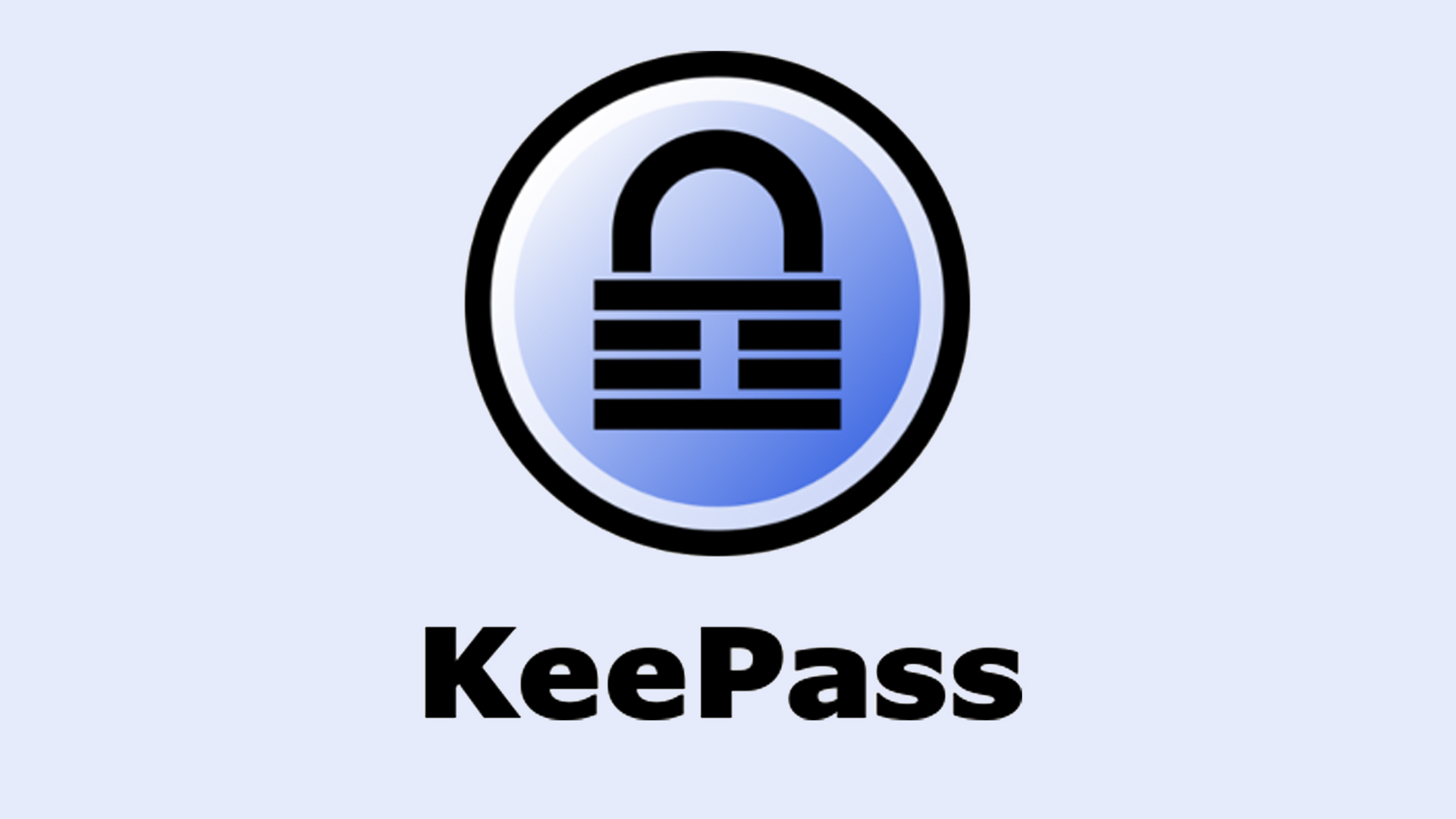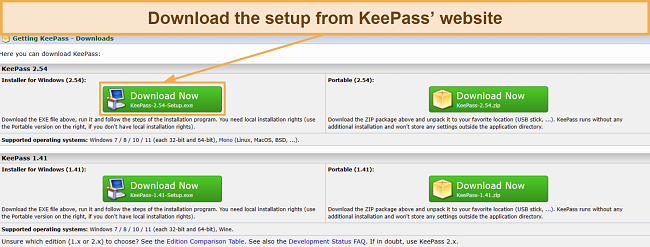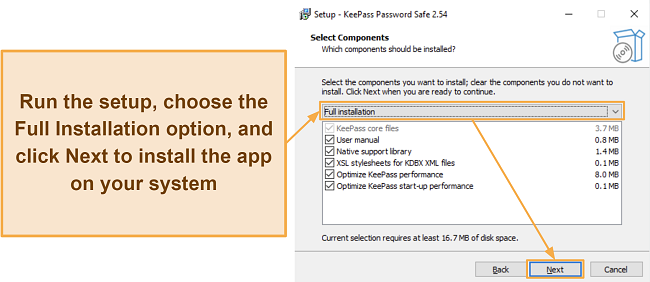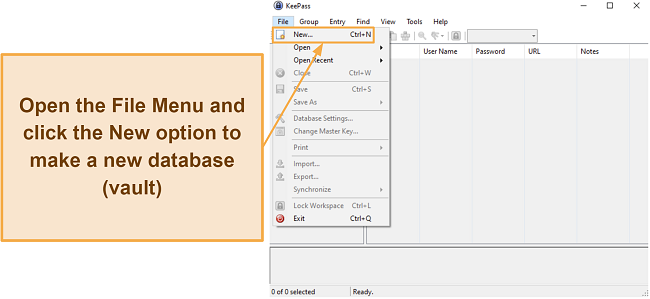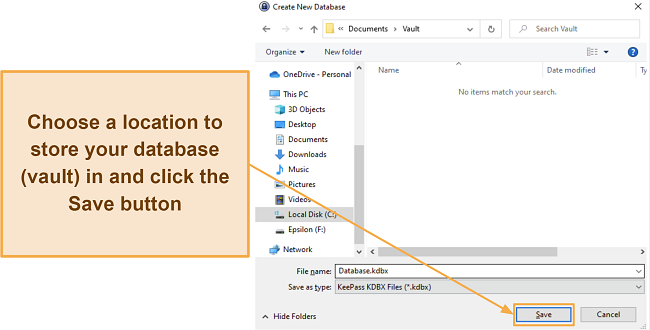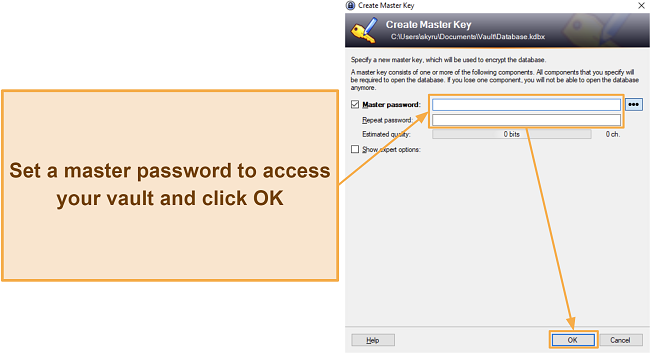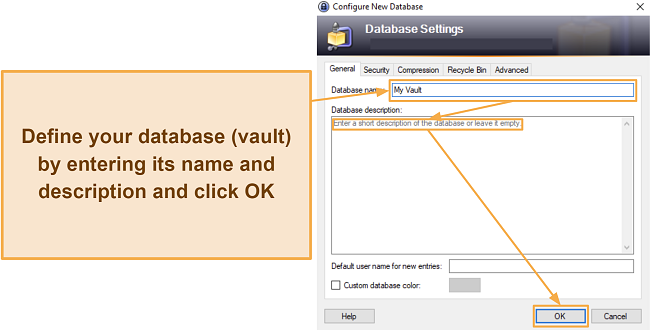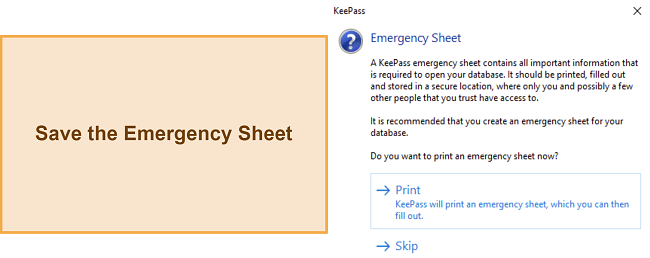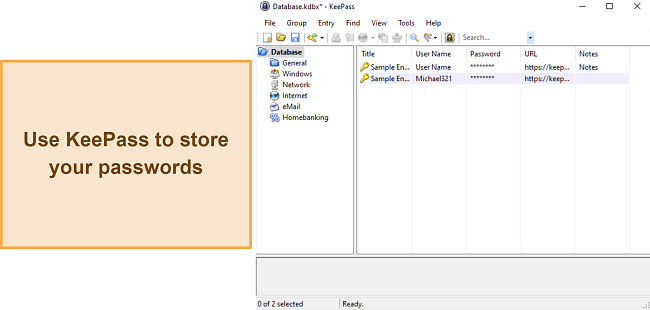KeePass Review 2024: Before You Buy, Is It Worth It?
KeePass Overview
KeePass is free and open source, and it offers AES 256-bit/ChaCha20 encryption, both of which are considered unbreakable encryption standards. So, I thoroughly tested this app and compared it to the best password managers available to see if it’s worth getting.
Unfortunately, KeePass is somewhat hard to use and has limited features. Setting the app up is confusing if you aren’t tech-savvy, and its auto-type feature doesn’t work perfectly. While you can improve the app with plugins, they’re all made by third parties, meaning they aren’t as trustworthy and might compromise your data.
So, KeePass isn’t nearly as good as the current best password managers. Instead, I suggest you get Dashlane to safeguard your passwords. Its free plan includes everything KeePass has, and you can try Dashlane premium risk-free with its 30-day money-back guarantee.
Try Dashlane risk-free for 30 days
Don’t Have Time? Here’s a 1-Minute Summary
- Solid password security — KeePass uses military-grade AES 256-bit/ChaCha20 encryption to protect your data. Find out more about its security here.
- Not as feature-rich as other options — While you can add more with plug-ins, KeePass’ base app has limited features. Jump here to read more about its password management features.
- Hard to set up — KeePass is harder to set up than other top password managers. Learn about my experience with its app here.
- Limited customer support channels — KeePass has community forums but lacks crucial support options like live chat. Read about the available support channels here.
- Completely free — KeePass is free to download and use. Discover what KeePass offers for free.
Security
After thoroughly testing this app, I found that KeePass provides excellent password safety and ensures your data won’t fall into the wrong hands. It offers multiple unbreakable encryption protocols you can choose from and includes two-factor authentication to provide an extra layer of safety.
Besides the above, KeePass is entirely open source. Anyone who’s tech-savvy can review its code themselves to verify that it is, in fact, a secure password management solution.
Multiple Unbreakable Encryption Options
Something interesting about this app is that KeePass provides 2 different encryption standards you can choose from. You can decide your encryption while setting up a database (vault) and choose AES 256-bit or ChaCha20. Both options are highly secure, meaning your data will be safe no matter your pick.
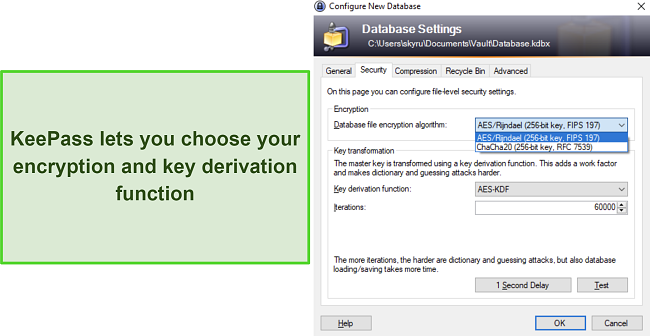
Besides the encryption, KeePass lets you choose your key derivation function. The available options are Argon2D and AES-KDF, both of which are highly secure. Plus, you can specify an iteration count for your key derivation function. The higher your iteration count is, the safer you’ll be. However, saving and loading passwords from a higher iteration vault is slower.
Two-Factor Authentication (2FA)
Although it doesn’t use authenticator apps, text/email-based codes, and other modern methods, KeePass includes two-factor authentication (2FA). It handles this via key files, which you can create while setting a master password for your vault. After setting this up, you must provide the key file while entering the master password to access your vault.
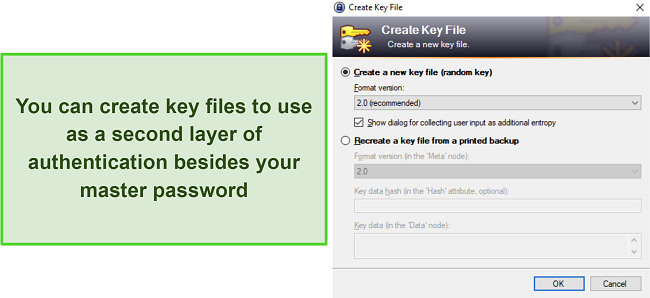
Also, KeePass lets you use your Windows account as a two-factor authentication method. Enabling this option ensures your vault is only accessed when the correct Windows account is logged into. The app won’t unlock your vault if any other Windows account on the same computer attempts to access it.
Privacy — Open Source and Locally Hosted
While it hasn’t cleared any independent audits the way top choices like Dashlane have, I consider KeePass trustworthy. It’s open source, meaning anyone can directly review its code and audit its trustworthiness and safety.
Besides being open source, KeePass is locally hosted, so none of your data is ever communicated with outside servers. This makes your data very secure but sacrifices the convenience that web access could bring.
Overall, KeePass is a secure and trustworthy password manager. However, it has limited two-factor authentication options and hasn’t been independently audited. So, I’d prefer a top alternative like Dashlane for more comprehensive password safety.
Features
While its various plugins help offset this, I was disappointed with KeePass’ feature set during my tests. It only has basic password management tools, and some features like the auto-type don’t work correctly most of the time.
Databases (Vaults)
Vaults in KeePass are known as databases and are where you store all your passwords and sensitive information. Like the rest of the app, KeePass’ vaults have a basic design and aren’t the easiest to navigate. The interface is outdated and less intuitive than what you get with vaults from top apps like Dashlane and 1Password.
Thankfully, KeePass helps organize your vault data using the Groups feature. You can create as many groups as you want and use them to manage all the passwords and other data you’ve stored in the app.
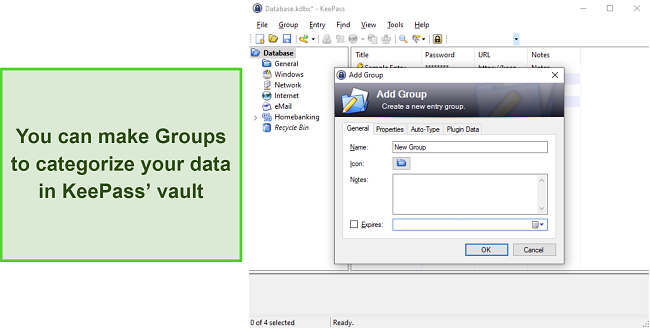
KeePass lets you create multiple vaults, but you should know that only 1 can be active at a time. To access another vault, you must close the open one, load the other vault’s database file, and enter its master password (and key file if you’ve set up 2FA).
Password Generator
KeePass’ password generator is one of this app’s biggest highlights. It’s a highly customizable feature capable of generating over 1000-character-long passwords, meaning it’s perfect for getting unbreakable passwords for your accounts.
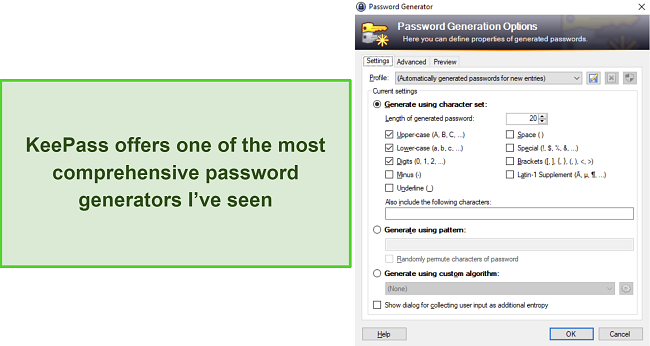
The password generator also lets you pick whether you want to include numbers, upper/lowercase letters, special characters, spaces, brackets, and more. Plus, you can provide custom patterns or algorithms, and KeePass will generate passwords accordingly.
Import/Export
KeePass has straightforward import/export features that I found easy to use in my tests. Both these options are available in the File menu. To export a file, open the Export menu, choose the export format, enter the destination location, and click OK. You can export vaults as KeePass KBD/KBDX files, CSV files, XML files, and HTML files.
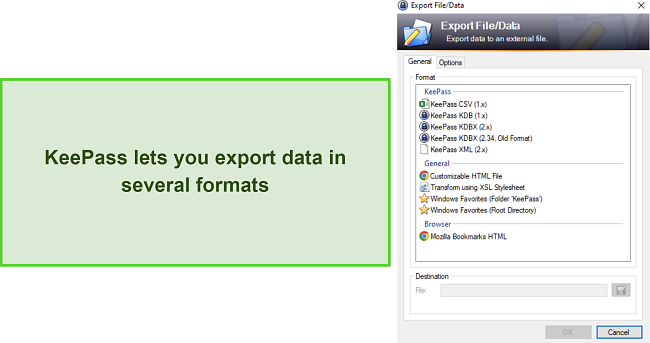
KeePass’ import feature is equally simple and easy to use. I was impressed with how many formats and sources it supports. You can import from popular password managers like RoboForm and 1Password or browsers and generic CSV files.
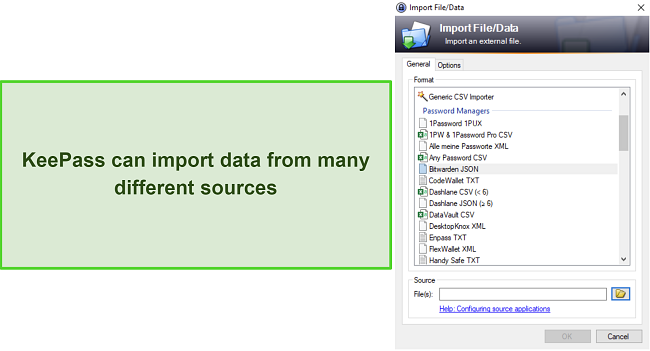
Auto-type
While it doesn’t have auto-save, auto-type is KeyPass’ version of the auto-fill tool that most password managers have. It doesn’t instantly fill information but simulates keypresses to enter data from your vault onto web forms. Unfortunately, KeyPass’s auto-fill had lots of issues during my tests.
I tried logging into various websites, and KeePass often filled my password into the username section. Sometimes, it would proceed with the login without even entering my password. Also, using this feature is inconvenient, as you must select the saved login from the app and click the auto-type button or use its shortcut key.
The feature works well sometimes, but I don’t consider KeyPass’ auto-fill worth using. It fails too often to be reliable, and you must always manually select it when needed, while other password managers auto-fill data automatically.
Plugins
While it isn’t the most feature-rich password manager, KeePass lets you add new features with plugins to improve the app’s functionality. With plugins, you can improve the auto-type, enhance the password generator, make the app look better, upgrade security, and bring various other improvements to KeePass.
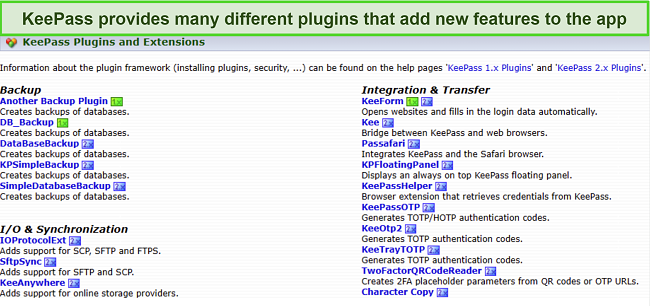
All the available plugins are listed on its website, and you can add them by going to the Tools menu, choosing the Plugins option, and selecting the plugin files you’ve downloaded. Of course, you should note that these are third-party add-ons, meaning the plugins can’t be fully trusted.
Overall, KeePass falls far behind its competition when it comes to features. It has limited tools, and its auto-type doesn’t work correctly. Of course, you can fix some of these issues with plugins, but other top alternatives like Dashlane provide all the necessary features without needing plugins.
Ease of Use
KeePass is a bit confusing to install and has multiple steps you don’t encounter in other apps. On the other hand, the best modern password managers, like Dashlane and 1Password, have intuitive setups, meaning you can start using them in minutes.
To use KeePass, you must first install its desktop app. Once installed, you must also set up your database (vault) before saving any information in the app. Of course, it’s also important to store this file in a safe location on your system, and all these steps can confuse people who aren’t tech-savvy.
You can only use KeePass on 1 device at a time since it isn’t cloud-based, and your data won’t automatically sync across devices.
Outdated Desktop App
KeePass’ app has a very outdated interface and doesn’t feel intuitive at all. You have to navigate multiple menus to find and use a feature or learn its keyboard shortcut, which isn’t beginner-friendly.
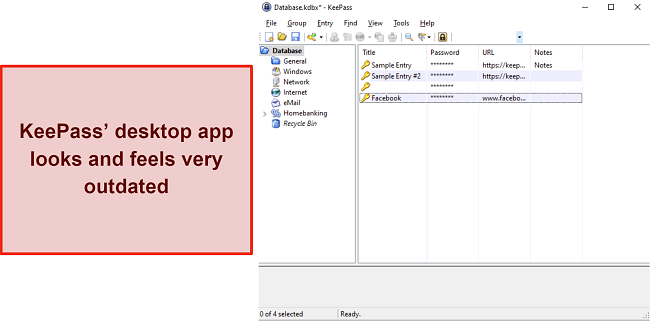
KeePass’ official desktop app is for Windows (7, 8, 10, and 11) only. You won’t find official apps for other desktop platforms, but there are various unofficial third-party apps for macOS and Linux if you want to use KeePass on these operating systems.
Well-Built Third-Party Apps
Although the desktop app is outdated, KeePass has multiple well-designed third-party apps that let you use this password manager on your preferred platform. I tested KeePassDX for Android and was impressed with its modern and intuitive layout.
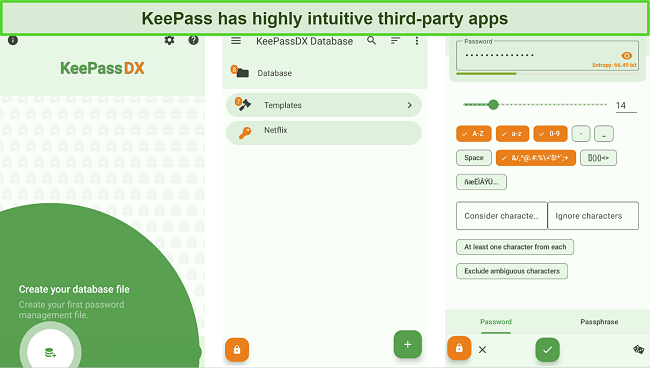
KeePass has third-party apps for Windows, macOS, iOS, Android, Linux, and various other platforms. So, you can easily use this app on any device you have. Of course, you must remember that the third-party apps are unofficial, so they may not be as safe as the official Windows version.
How to Download and Install KeePass on Windows
- Get the setup. Open the Downloads page on KeePass’ website and download the setup.
![Screenshot showing how to download KeePass' setup from its website]()
- Install KeePass. Run the setup, choose Full Installation, and follow all the steps to install KeePass.
![Screenshot showing how to install KeePass on your system]()
- Create a new database. Click the New option in the File menu to create a new database (vault) in your KeePass app.
![Screenshot showing how to create a new vault in KeePass]()
- Choose your database location. Choose a location on your system to store the database (vault).
![Screenshot showing how to choose a file location for KeePass' vault]()
- Set a master password. Set a strong master password that you can also remember.
![Screenshot showing how to set a master password for your KeePass vault]()
- Define your database. Enter your database’s name and description.
![Screenshot showing how to enter details for your KeePass vault]()
- Get the Emergency Sheet. Save the Emergency Sheet to access your vault if you end up forgetting your password.
![Screenshot showing KeePass asking to save the Emergency Sheet for vault recovery]()
- Use KeePass. Protect your passwords and sensitive information using KeePass.
![Screenshot of KeePass' vault once it's been set up]()
Overall, KeePass isn’t beginner-friendly at all. Its official app is hard to set up and has an outdated interface that takes a long time to learn. So, if you want a user-friendly password manager that’s easy to use, I suggest you choose an alternative like Dashlane.
Support
Limited Ways to Get Help
KeePass’ support isn’t nearly as good as what you get with the best password managers, but it provides multiple sources to get help. There’s a Help Center, which is KeePass’ knowledge base and has useful information about the app. Plus, you can open the community forums if you’d instead connect with an expert directly.
Help Center
KeePass’ Help Center is an in-depth knowledge base with lots of information about how to use this app and its various features. It has detailed how-to guides for every tool in the app and even highlights how some features differ between KeePass’ current and older versions.
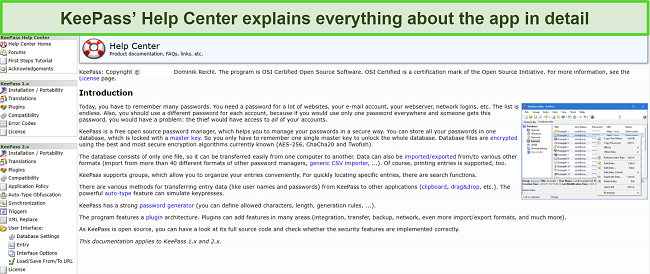
I successfully set up two-factor authentication using the Help Center and was pleased to see it provided a step-by-step guide for this. The information in the Help Center is easy to find, as all the topics are listed on the left-hand side. However, I would’ve liked a search function to make things even easier to find.
Community Forums
For situation-specific help, KeePass’ community forums are a valuable resource. You can create threads about your issues, and various experts will provide answers and help based on their experiences. Also, you may sometimes find that your question has already been answered before, thus saving lots of time.
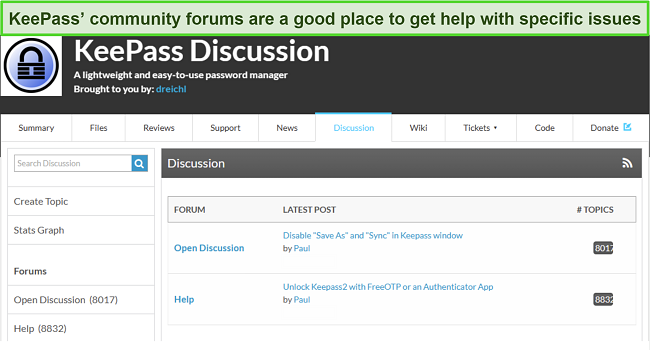
Of course, the forums aren’t nearly as fast as a live chat system. You may sometimes get an answer to your thread within a few minutes, but you might also have to wait a whole day before someone replies.
Overall, KeePass’ support is decent for a free app, but it isn’t nearly as good as what you get with top premium password managers. If fast customer support is critical, I suggest getting Dashlane to safeguard your passwords, as it offers helpful live chat support.
Pricing
Completely Free to Use
Of course, KeePass’ biggest highlight is that it’s completely free. It doesn’t have any paid plans, nor are any features locked behind paywalls. So, all you have to do is install it from the website, and you can use all the app’s features without any issues.
However, you should know that top password managers like Dashlane also provide free plans. While it isn’t as feature-rich as the paid subscriptions, I found that Dashlane’s free plan delivers more value than KeePass. It has a more intuitive app, better features, user-friendly vaults, and more for safer and easier password management.
For a comprehensive password management solution, I suggest getting Dashlane’s Premium plan. Besides everything in the free plan, it provides a built-in VPN and an array of useful features, which we’ve tested in our in-depth Dashlane review.
Bottom Line
Despite it being free and open-source, KeePass isn’t a password manager I’d recommend to most. It’s hard to set up and has limited features. While it offers plugins to fix some of its issues, there’s an inherent security risk to using them, as they’re made by third parties. Also, the official desktop app has an outdated interface that isn’t pleasing to look at or use.
Instead, I suggest you get Dashlane if you want comprehensive password safety. It has intuitive apps, better safety, more features, and better customer support. While it’s a premium password manager, Dashlane also has a free plan with just as many features as KeePass. Plus, you can try Dashlane premium risk-free for 30 days, as it comes with a money-back guarantee.
Try Dashlane risk-free for 30 days
FAQs About KeePass
Is KeePass safe?
Yes, KeePass offers AES 256-bit and ChaCha20 encryption to secure your passwords. Also, it hosts all your data locally, so it’s not transmitted to any servers, and hackers can’t spy on your traffic to get your information.
Are KeePass plugins secure?
Not necessarily. While KeePass has several useful plugins, they’re all made by third parties, so there’s no way to verify if they’re safe. It’s possible to end up downloading a plugin that seems safe but is designed to steal your data.
Where does KeePass store passwords?
KeePass stores your passwords locally. Unlike other password managers that save your data in the cloud, KeePass keeps your vaults (databases) in a local file on your system. This is usually safe unless your system and vault password get compromised with a virus. So, getting a top antivirus solution is a great way to ensure your KeePass data stays safe.
Is KeePass free?
Yes, KeePass is completely free to use. It has no paid plans, meaning you can use all its features for free. However, the best premium password managers, like Dashlane, also offer free plans that deliver more value than KeePass.
